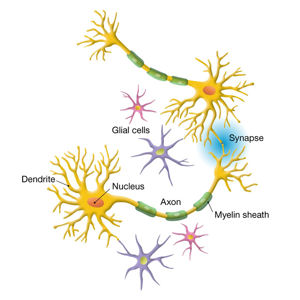
Team Applies New Procedure to Rapidly Induce Nerve Regeneration in Mammals
February 3, 2012 (Texas) -- American scientists believe a new procedure to repair severed nerves could result in patients recovering in days or weeks, rather than months or years. The team used a cellular mechanism similar to that used by many invertebrates to repair damage to nerve axons. Their results are published today in the Journal of Neuroscience Research.
“We have developed a procedure which can repair severed nerves within minutes so that the behavior they control can be partially restored within days and often largely restored within two to four weeks,” said Professor George Bittner from the University of Texas. “If further developed in clinical trials this approach would be a great advance on current procedures that usually imperfectly restore lost function within months at best.”
The team studied the mechanisms all animal cells use to repair damage to their membranes and focused on invertebrates, which have a superior ability to regenerate nerve axons compared to mammals. An axon is a long extension arising from a nerve cell body that communicates with other nerve cells or with muscles.
This research success arises from Bittner’s discovery that nerve axons of invertebrates which have been severed from their cell body do not degenerate within days, as happens with mammals, but can survive for months, or even years. The severed proximal nerve axon in invertebrates can also reconnect with its surviving distal nerve axon to produce much quicker and much better restoration of behaviour than occurs in mammals.
“Severed invertebrate nerve axons can reconnect proximal and distal ends of severed nerve axons within seven days, allowing a rate of behavioural recovery that is far superior to mammals,” said Bittner. “In mammals the severed distal axonal stump degenerates within three days and it can take nerve growths from proximal axonal stumps months or years to regenerate and restore use of muscles or sensory areas, often with less accuracy and with much less function being restored.”
The team described their success in applying this process to rats in two research papers published today. The team were able to repair severed sciatic nerves in the upper thigh, with results showing the rats were able to use their limb within a week and had much function restored within 2 to 4 weeks, in some cases to almost full function.
“We used rats as an experimental model to demonstrate how severed nerve axons can be repaired. Without our procedure the return of nearly full function rarely comes close to happening,” said Bittner. “The sciatic nerve controls all muscle movement of the leg of all mammals and this new approach to repairing nerve axons could almost-certainly be just as successful in humans.”
To explore the long term implications and medical uses of this procedure, MD’s and other scientist- collaborators at Harvard Medical School and Vanderbilt Medical School and Hospitals are conducting studies to obtain approval to begin clinical trials.
“We believe this procedure could produce a transformational change in the way nerve injuries are repaired,” concluded Bittner.







Recent comments